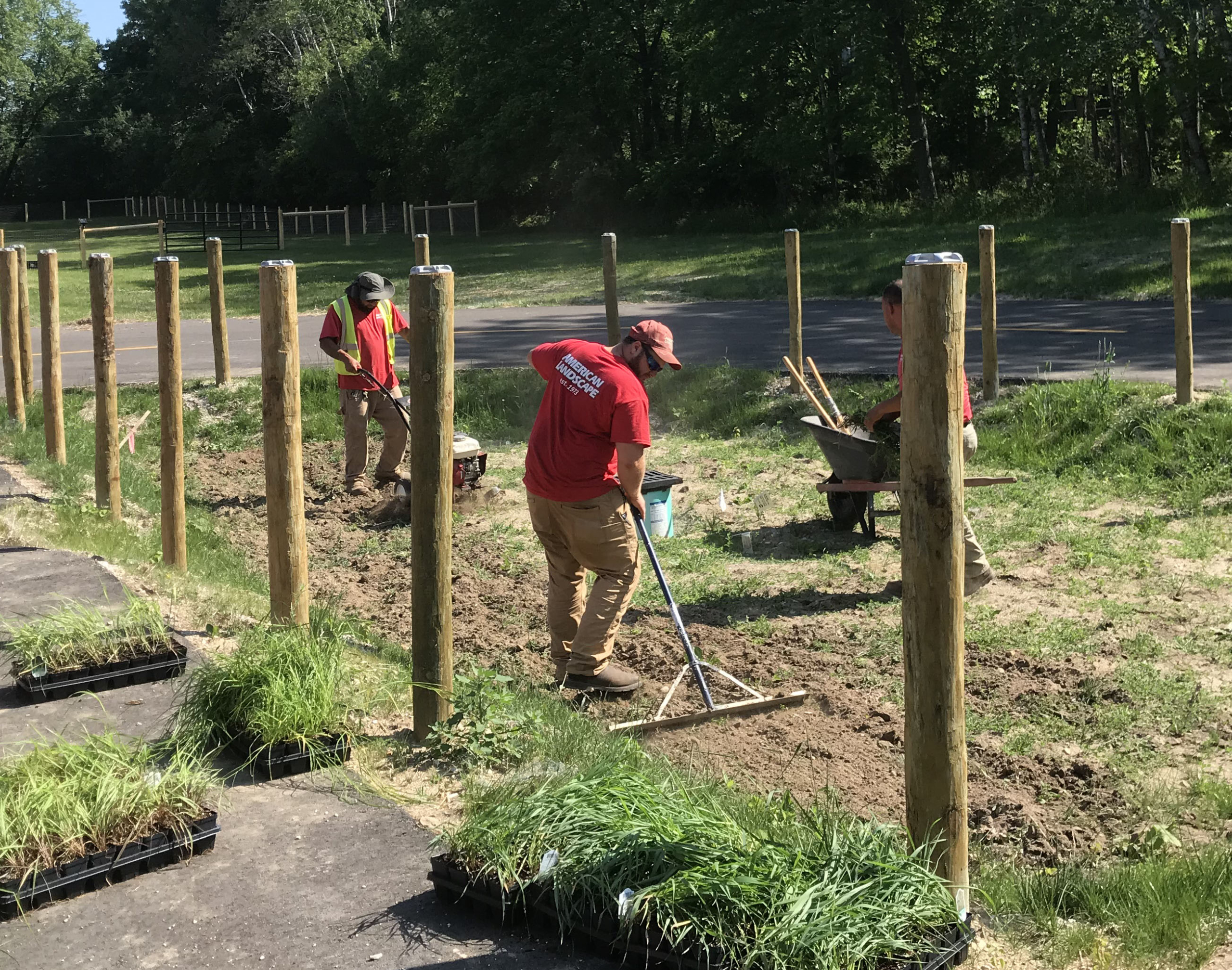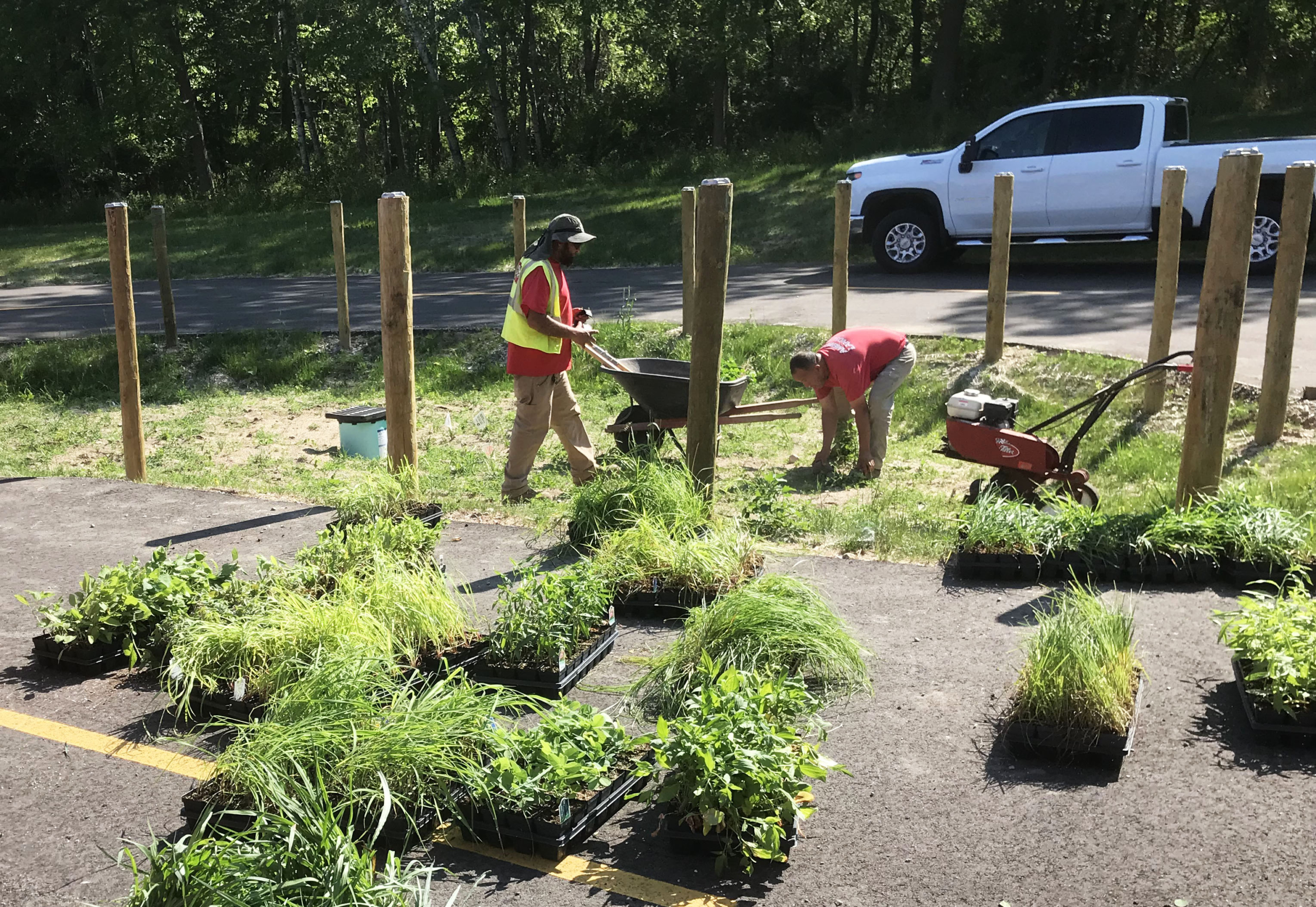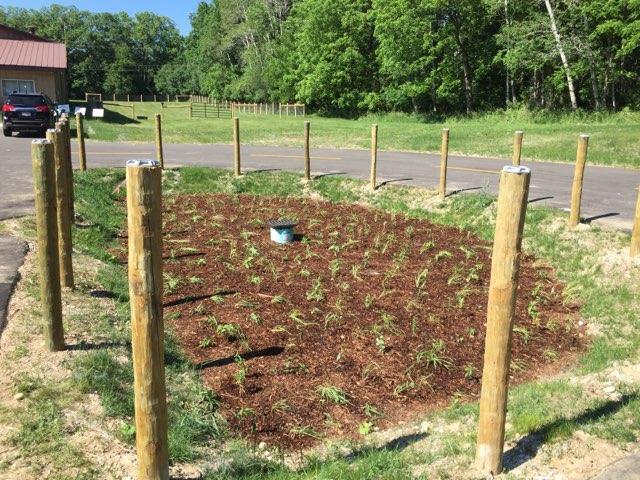Creating a Rain Garden in Delafield, Wisconsin
Earlier this year, we were happy to be a part of establishing a rain garden at a commercial property in Delafield, Wisconsin.
The purpose of the rain garden is to collect, absorb and filter run off from the parking lot. A rain garden in this situation has specially engineered soil and filtration layers. Having the rain garden plants and filtration layers serves multiple functions:
- helps prevent contaminates from reaching our waterways
- assists in preventing flooding and drainage problems
- increases the amount of rainwater that filters directly into the ground
- benefits our native wildlife because they are filled with native plants
How a Rain Garden Works
A rain garden sits lower than the drainage pipe to allow as much water as possible to filter through the root systems of the plants and the filtration materials. In the event of a substantial flood event, water would enter a traditional drainage overflow system to prevent flooding of the public space. Rain gardens in the home landscape rarely require extra drainage systems as they do not need to filter runoff from a large paved surface.
On this jobsite, the building contractor engineered and built the structure and American Landscape planted and established the gardens. The builder constructed the areas for the gardens in fall, but since it was too late in the year to establish the small plants we planned on using, we waited until spring to get started.
Establishing Native Plants in the Rain Garden
First, the crew prepared the area by removing any weeds and lightly tilling the surface, being careful not to damage any layers.


We sorted the plants by variety and planted them in groupings to mimic the native environment. A variety of native grasses, sedges and wildflowers were chosen based on their ability to tolerate varying moisture levels. Over 700 native plants will be used between the 2 beds. You can find native plants that will work for your own rain garden plans here.


Plants will be watered regularly so that they can develop strong root systems, and weeds will be kept to a minimum to prevent competition as the young plants grow.
Once they are established the garden will require little care, other than monitoring for and removing invasive weeds, and some watering during times of drought. As with any planting, a little maintenance will always be required, but the payback to the environment in this situation is well worth the effort.
We were grateful for the opportunity to participate in such a project and look forward to future projects as more and more communities are starting to require environmentally sound storm water management practices.
If you’re interested in learning more about rain gardens you can go to this link provided by the Wisconsin DNR
https://dnr.wi.gov/topic/Stormwater/documents/RainGardenManual.pdf.
Our designers have the expertise to work with you to create your own rain garden. Get in touch today to schedule a time to discuss your plans.
